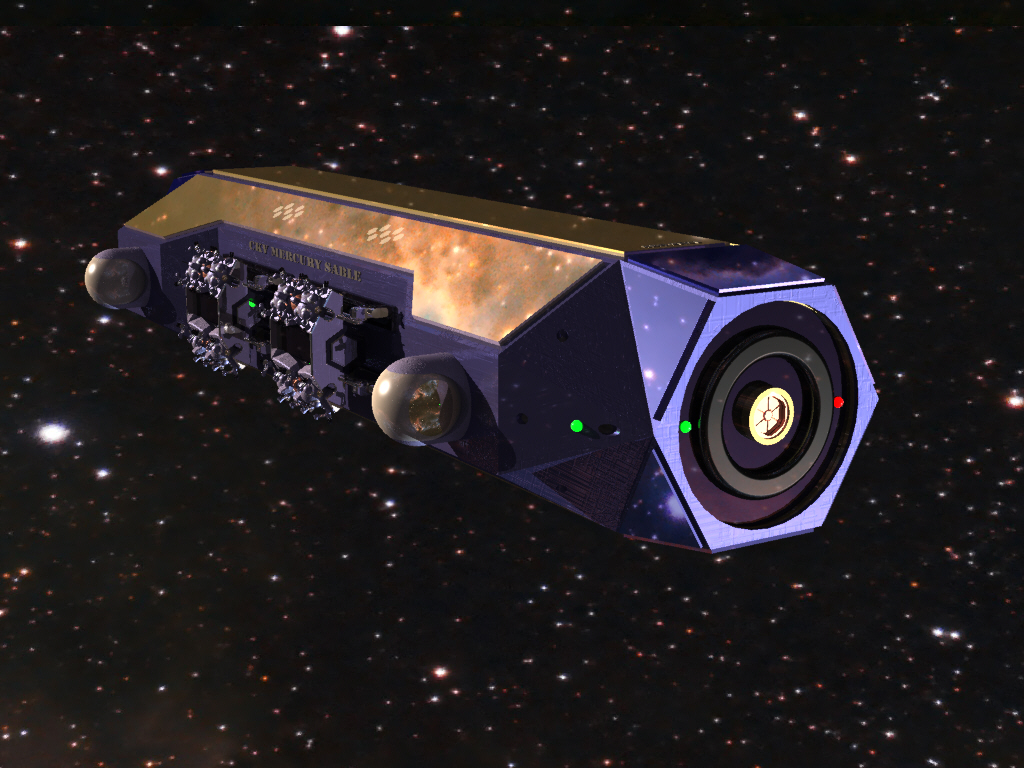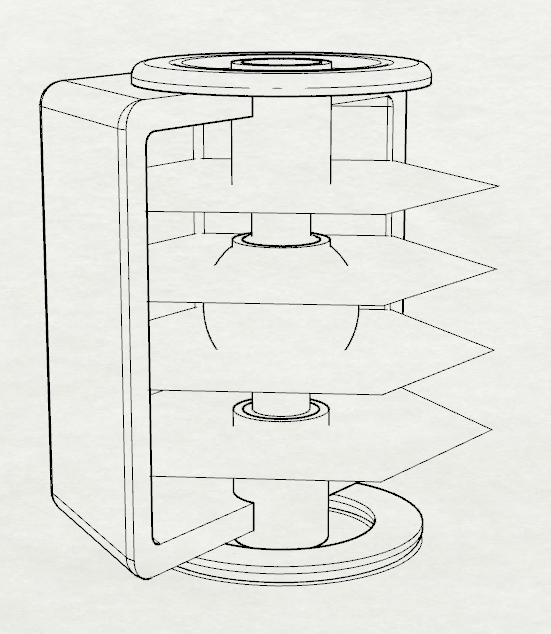General Purpose Module
A general purpose module (frequently abbreviated GPM) is an inflatable module for all varieties of modular spacecraft - especially of Evermornan make - above a minimum size. General purpose modules are popular for a variety of reasons, from their standardized, collapsible dimensions to their versatility in roles.
All Evermornan vehicles are modular to some extent, and GPMs were invented with this design ethos in mind. While general purpose modules must conform to certain standards in terms of dimensions and capabilities, different GPMs may have different accoutrements, such as additional ports or connections, to suit more specific ranges of roles aboard a modular spacecraft. A series of up to four stiff meshes may be strung across the space within along expanding support truesses, creating several decks for crew operations under centrifugal gravity.
Power Generation
GPMs are generally not self-powered, relying on external power and data connections for most functions. However, being all-purpose modules, a GPM may include in its volume a suitably compact generator system - in this case, usually a bank of fuel cells, foliated capacitance batteries, or atomic batteries as required for the mission profile. Furthermore, as the thick, water-filled walls of a GPM provide excellent particle radiation protection, they may be used to contain small-scale fission or fusion reactors (usually for research purposes).
Propulsion
GPMs are generally not self-propelled, relying on external propulsion busses mounted to their sturdy docking rings for this purpose.
Weapons & Armament
GPMs are seldom armed, though they may be included as habitation modules or ordinance packages aboard military craft.
Armor and defense
The walls of a general purpose module consist of a double-layered inflatable volume, with the inner and outer layers constructed of thick interlaced fabric sheets. The space between the layers is typically filled with water which, in turn, is slowly frozen via integrated refrigeration coils, creating sheets of graphene pykrete up to five feet thick. Once so inflated, a GPM becomes extremely difficult to penetrate with conventional kinetic, thermal, or radiological weapons, though they are by no means impervious. Should a region of ice become fractured within this space, that patch may be allowed to briefly melt and refreeze to provide a degree of self-healing. Finally, both the inner and outer layers are inlaid with field-resistant meshes to prevent attempts at electronic warfare or magnettic pulse attacks.
The hulls of most Evermornan spacecraft - epecially military craft - are actually hollow, providing an enclosed space for GPMs selected to fit a specific mission profile. This external hull bears the ship's vehicle identity and any non-modular systems (i.e. primary computer core) as well as any additional defenses or hardpoints which the operators may require. For example, the CKV Mercury Sable is a hollow shell capped with a force docking array at one end and a shielded toroidal fusion drive at the other. The Sable's 'consist' is a set of up to four GPMs, of which one or two are always fusion fuel reservoirs, one or two are always crew modules, and one is typically a weapons package (usually racks of spherical shaped fusion charges capped with bomb-pumped x-ray laser emitters). In the case of such a military vessel, the additional defensive benefits provided to the GPM include defensive magnettic fields, carbon-composite plating, additional radiation shielding layers, and yet more field-proof meshing.
Communication Tools & Systems
A GPM is connected to its adjacent spacecraft structures by a series of data, power, and resource ports arranged within the upper and lower docking spacer 'lips' for protection from outside interference. Communication with the outside world is usually accomplished via external communications packages, often the ubiquitous multispectral scope.
Additional & auxiliary systems
The water between the inner and outer hull layers of the GPM typically forms an integral part of the connected vessel's life support system, though it may also be held in reserve for use as propellant.
Hangars & docked vessels
While the twin airlocks of a GPM are 10' across at the aperture, the largest objects typically passed through them are espatiers in full power armor. Objects much larger than this, such as drones, are more often launched from exterior docking clamps. Usually, a GPM is itself a docked vehicle - or, at least, a component thereof - with regard to a larger vessel. Though there are modestly more compact inflatable modules available on the market, those often lack the stackability of GPMs in their final, inflatable forms, and this factor alone has seen greater use of GPMs than other options as 'plus ones' in modular vehicle construction.
Nickname
GPM
Rarity
Ubiquitous
Width
50ft (hexagonal edge to edge)
Length
50ft (docking ring to docking ring)
Complement / Crew
Varies based on configuration
Cargo & Passenger Capacity
Varies based on configuration





Comments